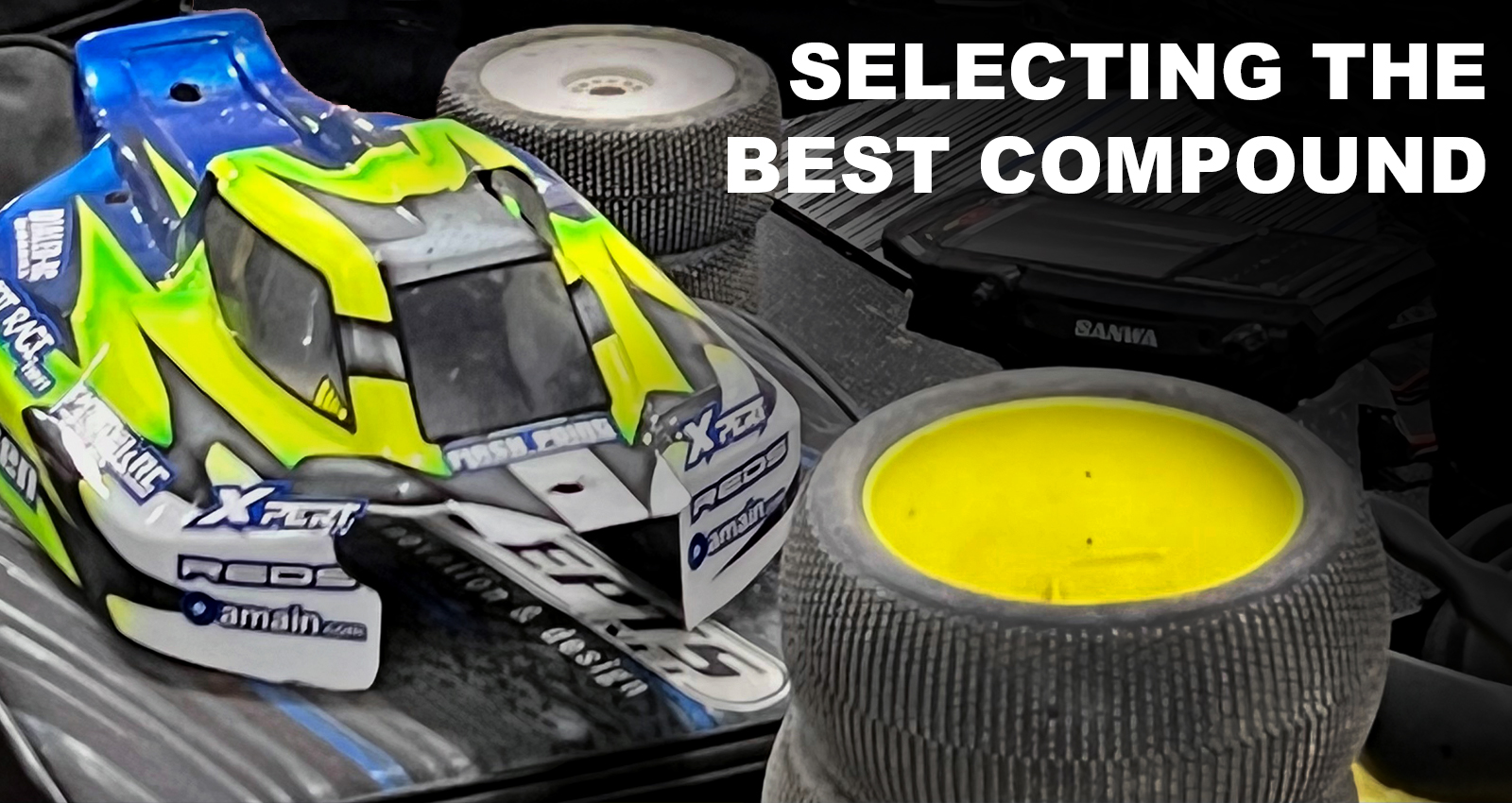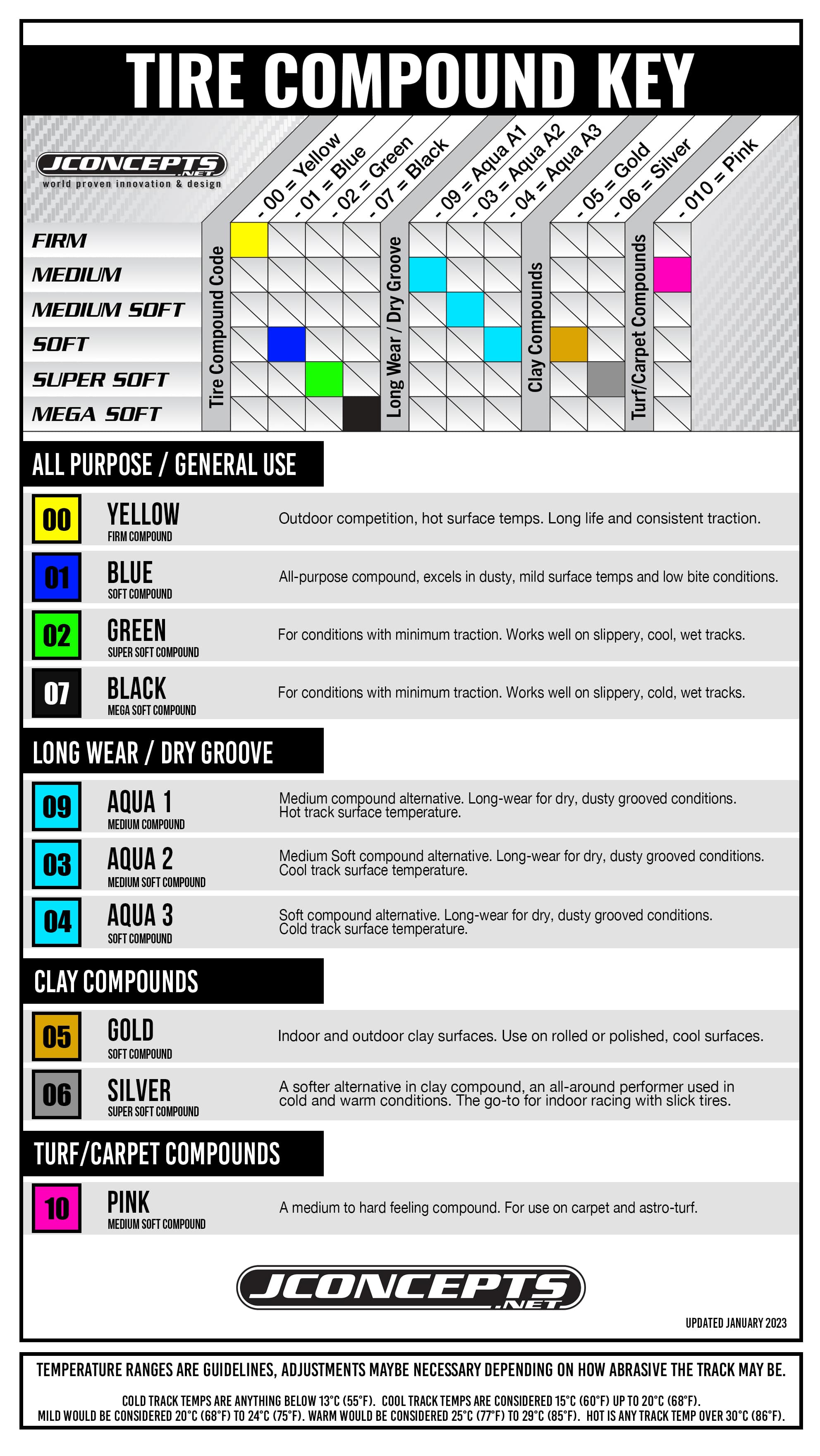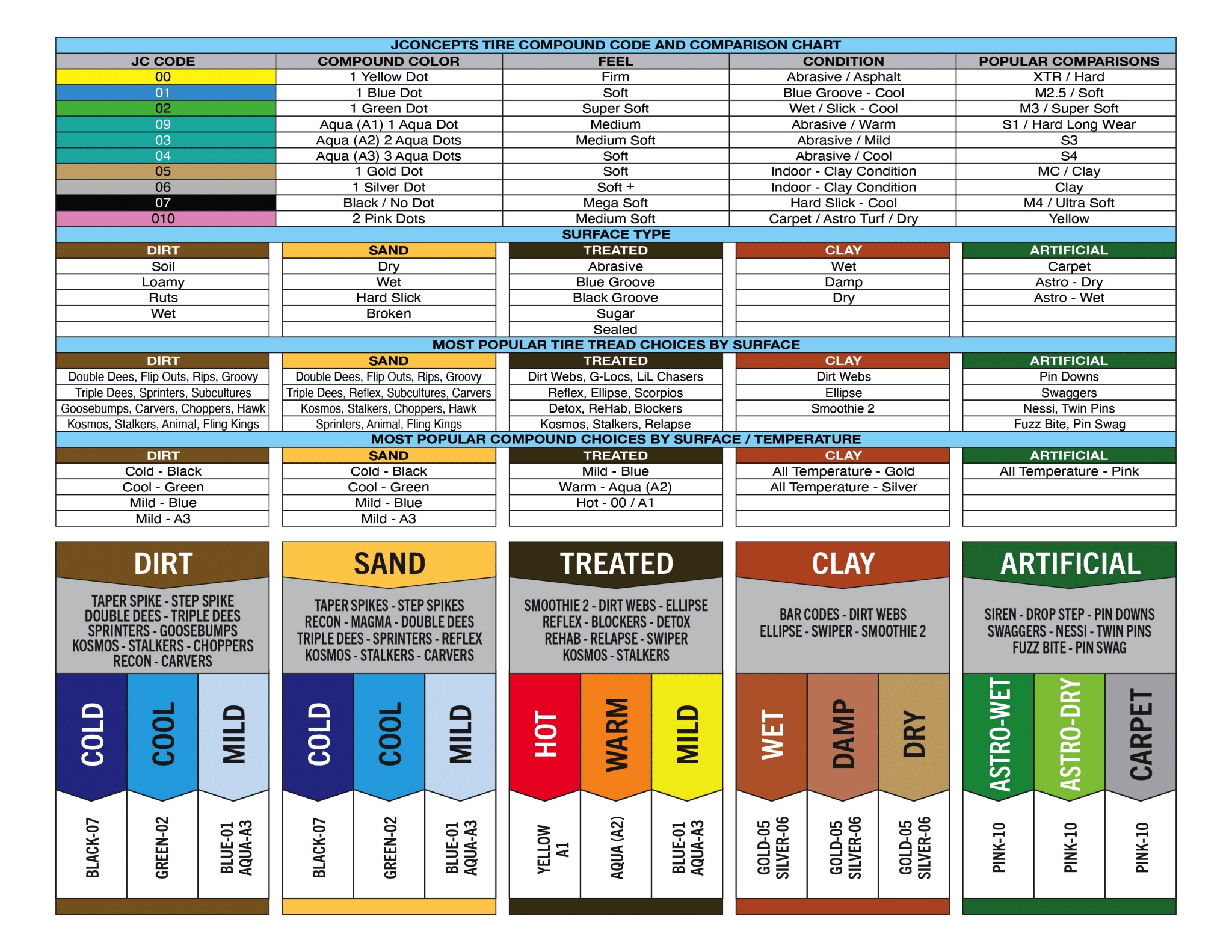
In the world of remote-controlled car racing, tire selection plays a serious role in achieving success. Whether you're a seasoned veteran or a newcomer, choosing the right compound is essential to get the most out of your car. In this article, ProTek RC PRO Team driver Adam Drake will talk about tire compounds and their significance. The importance of tire selection is paramount, and tire setup is approximately 80-85% of the overall setup. While both tread pattern and compound are essential, selecting the right compound is more critical because it can significantly impact your vehicle's performance. Thus, choosing the correct compound is crucial, especially in 1/8 scale off-road racing.

Selecting the best compound for your track condition.
- ProTek RC PRO Team Driver
- Wet Tracks - Let's dive into different track conditions/scenarios, and the compounds you should choose. In Southern California, where I live, most tracks are dry during practice days and wet during races. The track usually gets watered every other race, so odd-numbered races get water in round one, while even-numbered races get water in round two. On longer main races, they might water the track every so often. However, tracks generally hold a reasonable amount of moisture. For these conditions, green and blue compounds are the most commonly used, with green being super soft and blue being soft.
- Abrasive Tracks - When it comes to practice days, it's a bit different. Thunder Alley is an excellent example because it's a popular track in Southern California. During the day, it's extremely abrasive and has a high bite. If you stick with a green compound, your car will be aggressive, increasing tire wear. Therefore, using blue or aqua compounds during the day will be more suitable. Even the newer JConcepts aqua compounds, 3 and 4, can be used. However, when it's wet, green is the go-to option. In dry conditions, blue or A2 compounds work best.
- Cold Temperatures - Black compounds work well when racing in cold temperatures like indoor arenas. When you sauce tires, it usually eats the rubber, making them wear faster. In such cases, using a black compound without softs is better, providing similar driving or feeling characteristics. However, aqua compounds are useful when blue compounds become edgy or aggressive or you're concerned about tire wear.
Be sure to watch Adam's YouTube videos on choosing the correct tire compounds and selecting the best tread for your track conditions. We've included a link below these tire compound charts.
RC Tire Compound Comparison Chart


Check out these RC Tire Tuning Tips
Choosing the Correct Tires - Part 1 Compounds
Temperature does matter when choosing compounds but don't rely on only temperature when choosing the correct compound.
